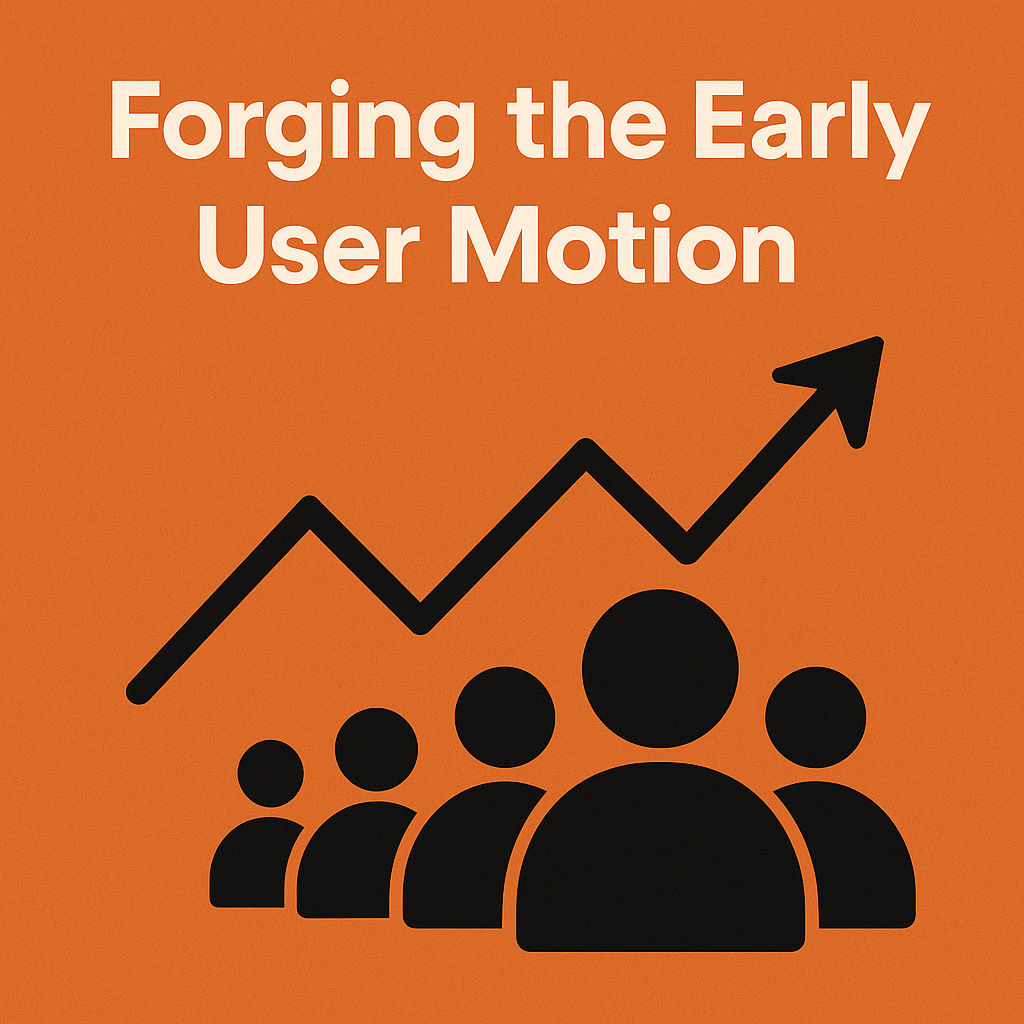Forging the Early User Motion
When your first build is barely more than an experiment, how do you find the spark that ignites lasting traction?
No founder ever forgets the moment when a real person tries their product for the first time. That instant of vulnerability, where months of design, coding, and daydreaming meet a human’s expectations, is the crucible in which ideas are tested and steel is tempered. In this era of rapid disruption, the ability to recruit early users and create authentic motion separates fragile prototypes from resilient ventures.
The Myth of the Perfect Launch
It’s tempting to believe a product should be polished to perfection before showing it to the world. But in practice, perfection stalls progress. Reid Hoffman famously said, “If you’re not embarrassed by the first version of your product, you launched too late.” The early launch isn’t about making a splash; it’s about collecting information. Every click, every hesitation, every drop-off reveals something essential: does anyone truly care?
Perfection may impress; motion uncovers reality. When you invite real users into your unfinished vision, you test two core hypotheses simultaneously: that your idea solves a genuine problem, and that your narrative communicates that solution effectively.
Recruiting Your First Believers
In this phase, you are not an advertiser; you are a recruiter. You are assembling a team of early adopters who will give you unvarnished feedback and amplify your product’s potential. This isn’t a social media blitz or a PR campaign — it’s direct, personalized outreach.
Founder-Led Introductions. Send handwritten emails. Record short videos explaining why you built this for them. Tap networks of complementary founders, friends, or colleagues. Your authenticity and enthusiasm are more persuasive than cold ad budgets.
Micro-Communities. Identify niche forums, Slack groups, or local meetups where your target users already congregate. Engage genuinely before dropping your link. A warm introduction in the right circle can yield more insights than thousands of impressions.
In-Person Experiments. If a segment of your audience works in a shared workspace or industry conference, drop by with coffee and a demo. Watching users interact in real time surfaces nuances that analytics alone can’t capture.
Crafting an Intentional First Experience
Every handshake matters — especially the first one. Onboarding should guide users gently, highlighting your product’s core value within minutes. You’re not teaching them every feature; you’re leading them to one satisfying outcome.
Concise Orientation: A two-step tour, a short video walkthrough, or an embedded tooltip that calls out the single “aha moment.” Avoid multi-page tutorials.
Personalized Guidance: Collect a key preference or goal at signup, then tailor the interface or recommendations accordingly. A 30-second quiz can transform a generic trial into a bespoke preview.
Concierge Support: Offer a quick-schedule link for a one-on-one session. Early adopters love having direct access to founders; you’ll learn what voice messages and surveys won’t tell you.
Measuring Motion, Not Vanity
In the early user motion stage, meaningful metrics outweigh large numbers. Track the few actions that signal true engagement:
Time to Aha: How long until a user completes the core action that validates your value proposition? Aim to minimize this.
Return Rate: What percentage of first-time users come back within seven days? Even a small cohort returning consistently is a green light.
Referral Propensity: How many users invite a friend or share your product organically? This indicates both satisfaction and evangelism potential.
Record these metrics in a simple dashboard — even a shared spreadsheet suffices. The goal is to surface patterns, not prettify charts.
Embracing Foundational Feedback
Collecting feedback is not a checkbox; it’s an ongoing conversation. Early users are collaborators in your forging process.
Qualitative Interviews: After a week of usage, invite top responders for a 20-minute interview. Observe them navigating your product, ask open-ended questions, and let silence guide new revelations.
Iterate Rapidly: Act on feedback within days, not weeks. Let users see their input reflected in small updates; this builds trust and cements their investment in your success.
Share Progress Transparently: Publish a changelog or a public roadmap that credits early contributors. When users see you value their input, they become champions.
The Founder's Hypothesis Mindset
At this juncture, every user interaction refines your hypotheses: about the problem, the solution, and the messaging. Cultivate an attitude of perpetual experimentation. Document your learnings systematically, and treat every failed expectation as a clue guiding you toward product-market resonance.
Signal over Noise. A handful of engaged users teach more than thousands of passive page views.
Iteration over Perfection. Rapid cycles of build–measure–learn create momentum faster than monolithic releases.
The Path Ahead
When you’ve established consistent motion — users returning, referring, and feeding insights back — you’ll be ready to Forging the Feedback Flywheel, where systematic learning accelerates iteration at scale. But that pivotal moment only arrives after you’ve mastered the art of early user motion.
In the crucible of your first users, you’ll discover whether you’re working with steel or glass. Forge wisely.



